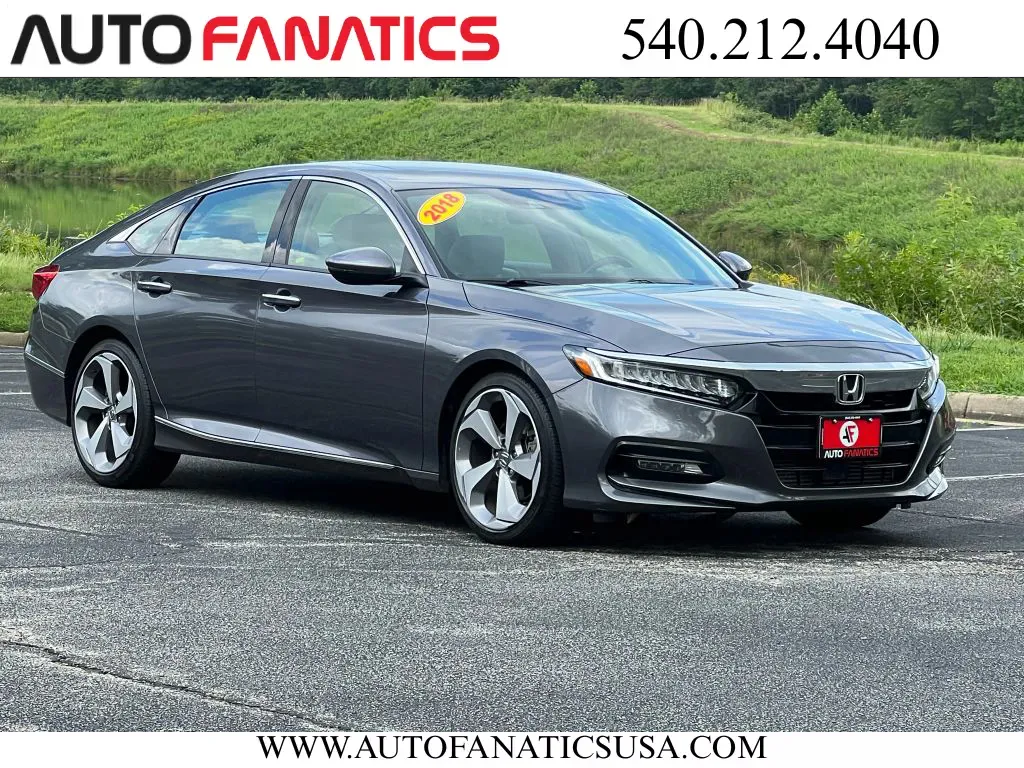How to Apply For a Car Loan (Easy Guide)
Table of Contents
How to Apply For a Car Loan (Easy Guide)
The secret to a smooth and stress-free car-buying experience is preparation. Walking into a dealership with your financial ducks in a row not only saves you time but also puts you in a much stronger negotiating position. Think of this guide as your personal toolkit for success. We’ll cover everything from checking your credit score and gathering the right documents to understanding the power of a down payment. By taking these simple steps before you apply for a car loan, you can handle the paperwork with ease and focus your energy on the most exciting part: finding the perfect car, truck, or SUV for your life.
Key Takeaways
- Get your paperwork in order first: Before you even start looking at cars, gather your proof of income, proof of residence, and check your credit score. Having this ready shows you’re a serious buyer and makes the entire financing process faster and far less stressful.
- Shop for your loan before you shop for your car: Securing a pre-approval from a lender gives you a firm budget and powerful negotiating leverage. When you walk in with financing already arranged, you can focus solely on the vehicle's price, not the monthly payment.
- Focus on the APR and loan term, not just the payment: A low monthly payment is tempting, but it can hide a high total cost. Always compare the Annual Percentage Rate (APR) and the length of the loan to understand how much you'll actually pay in interest over time.
What You'll Need to Apply for a Car Loan
Walking into a financing discussion prepared is one of the best things you can do for yourself. It shows you’re serious, helps the process move quickly, and puts you in a stronger position. Lenders have a standard checklist of items they need to see to approve a loan. Getting these documents in order before you apply will make everything feel much less stressful. Think of it as creating your car-buying toolkit—having everything ready means you can focus on the exciting part: choosing your perfect ride from our wide selection of cars, trucks, and SUVs.
When you have your information organized, you can confidently discuss your options and understand the terms being offered. It’s about making the process work for you, not the other way around. Our goal is to make financing transparent and straightforward, and coming prepared is the first step toward a great experience. Once you have your documents together, you can get approved online to save even more time at the dealership.
Your Credit Score
Your credit score is one of the first things a lender will look at. It’s a quick snapshot of your financial health and history of paying back debts. This three-digit number plays a huge role in determining if you’ll be approved for a loan and what your interest rate will be. Knowing your score ahead of time helps you set realistic expectations and avoid any surprises during the application process. You can check your score for free through various credit bureaus or your credit card company. Getting pre-qualified with Capital One is another great way to see where you stand without impacting your score.
Proof of Income and Employment
Lenders need to know you have a steady source of income to comfortably make your monthly car payments. To verify this, they’ll ask for proof of your employment and earnings. It’s a good idea to gather a few recent pay stubs (usually from the last 30 days), your most recent W-2, or even the last two years of tax returns if you're self-employed. Having these documents on hand shows that you’re a reliable borrower who can handle the financial responsibility of a loan. This simple step can speed up your approval significantly.
Your Debt-to-Income (DTI) Ratio
Your debt-to-income (DTI) ratio might sound technical, but it’s a simple concept: it’s the percentage of your gross monthly income that goes toward paying your monthly debts. Lenders use this figure to gauge your ability to manage another payment. A lower DTI suggests you have a good balance between debt and income, making you a less risky borrower. Before you apply, take a moment to add up your monthly debt payments (rent, credit cards, other loans) and divide it by your gross monthly income. Our Car Loan Calculator can help you estimate your potential monthly payment to see how it fits into your budget.
The Documents to Have Ready
When you're ready to apply, having all your paperwork in one place makes a world of difference. It streamlines the process and shows the lender you’re organized and prepared. Here’s a quick checklist of what you’ll likely need to bring with you:
- A valid driver’s license
- Proof of income (pay stubs, W-2s)
- Proof of residence (a recent utility bill or bank statement with your address)
- Proof of car insurance (more on that below)
- Information on your trade-in, if you have one
Gathering these items beforehand will help you move through the financing steps with confidence and ease.
Details About Your Chosen Car
Once you’ve found a vehicle you love, the loan application becomes much more specific. Lenders will need details about the car to finalize the loan amount and terms. Be ready to provide the car’s make, model, year, mileage, and Vehicle Identification Number (VIN). You can find all of this information on the vehicle listing or window sticker. Having these details ready helps the lender process your application for that exact car, making the final steps much quicker. If you're still looking, you can browse our current inventory to find the perfect match.
Proof of Car Insurance
You can’t drive a car off the lot without it, and lenders require it before they’ll hand over the check. Proof of car insurance is mandatory because it protects their investment—and you—in case of an accident. Before you finalize your purchase, you’ll need to contact your insurance provider and add your new car to your policy. The insurance company will give you a policy declaration page or an insurance card to show the dealership. It’s a final, crucial step that ensures everyone is protected as you drive away in your new-to-you vehicle.
Key Car Loan Terms to Know
Getting a car loan can feel like learning a new language, with terms like "APR," "principal," and "loan term" thrown around. But don't worry, it's simpler than it sounds. Understanding these key concepts will empower you to make smart financial decisions and find a loan that fits your budget. Think of it as your cheat sheet for handling the financing process with confidence. Let's break down the essential terms you'll encounter.
Different Types of Car Loans
When you start looking for a car loan, you'll find a few different types. The most common distinction is between new and used car loans; since interest rates can sometimes be slightly higher for used vehicles, it's good to know which one you're applying for. You'll also see direct loans, which you get from a bank or credit union, and indirect loans, which you arrange through the dealership. At Auto Fanatics, we work with multiple lenders to help you secure financing for our entire inventory of high-quality used cars, making the process seamless. Most car loans are "secured," meaning the car itself is the collateral.
What Determines Your Interest Rate?
Your interest rate, or Annual Percentage Rate (APR), is essentially the cost of borrowing money. Several factors influence the rate you're offered. Your credit score is the biggest one; as Bank of America notes, the lowest advertised rates are typically for people with excellent credit. Lenders also consider the loan term (how long you have to pay it back), the loan amount, and the size of your down payment. The age and mileage of the vehicle can play a role, too. Getting pre-qualified is a great way to see what kind of rate you might be eligible for based on your credit history.
Choosing Your Loan Length
The loan term is the amount of time you have to repay the loan, usually expressed in months. Common terms are 36, 48, 60, or even 72 months. A longer term will give you a lower monthly payment, which can be tempting. However, it also means you'll pay more in total interest over the life of the loan. A shorter term results in higher monthly payments, but you'll pay off the car faster and save on interest. You can use a car loan calculator to experiment with different terms and see how they impact both your monthly payment and the total cost.
How Much Should You Put Down?
A down payment is the cash you pay upfront when you buy a car. While some loans don't require one, putting money down is almost always a good idea. A larger down payment reduces the amount you need to borrow, which can lead to a lower interest rate and a smaller monthly payment. As Chase Auto explains, paying more upfront can make it easier to get approved for a loan. A solid down payment also helps you build equity in the car immediately, reducing the risk of owing more than the car is worth. Trading in your current vehicle is a fantastic way to cover some or all of your down payment.
Breaking Down Your Monthly Payment
Your monthly car payment is made up of two parts: principal and interest. The principal is the portion of your payment that goes toward paying down the original amount you borrowed. The interest is the fee the lender charges you for borrowing the money. In the beginning of your loan, a larger portion of your payment goes toward interest. As you continue to make payments, more of your money shifts toward paying down the principal. You can easily estimate your monthly payment online to see how different loan amounts and interest rates will fit into your monthly budget.
Calculating the True Cost of Your Loan
The sticker price of the car isn't the final price you'll pay. The true cost of your loan includes the principal amount plus all the interest you'll pay over the entire term. Even a small difference in your interest rate can add up to significant savings. For example, MarketWatch highlights that improving your credit score can save you thousands over the life of a loan. When budgeting, also remember to account for other ownership costs, such as insurance, potential repairs, and optional automotive protection plans that can cover unexpected issues down the road.
Watch Out for Hidden Fees
A great interest rate can be less attractive if the loan is loaded with extra fees. Always ask the lender to provide a full breakdown of all charges before you sign anything. Common fees include origination fees (for processing the loan), documentation fees, and prepayment penalties (a fee for paying the loan off early). At Auto Fanatics, we pride ourselves on a transparent, no-pressure experience. We believe in clear communication and want you to feel completely comfortable with your financing. Our customer reviews reflect our commitment to honesty and integrity in every step of the car-buying process.
The Power of Pre-Approval
Walking into a dealership with a pre-approved auto loan is one of the smartest moves you can make in your car-buying journey. Think of it as your secret weapon. It shifts the power dynamic, putting you firmly in the driver’s seat of the negotiation process before you even test-drive a car. Pre-approval means a lender has already reviewed your financial standing and has agreed to lend you a specific amount of money at a certain interest rate. This isn't just a vague estimate; it's a solid offer that transforms you from a casual browser into a serious, qualified buyer.
This one step simplifies the entire process. Instead of juggling questions about what you can afford while trying to find the right car, you can shop with confidence, knowing your exact budget. It allows you to focus on what really matters: finding the perfect vehicle that fits your life. At Auto Fanatics, we want you to feel empowered and prepared. That’s why we encourage getting pre-approved. It streamlines your visit and helps us focus on getting you into a car you love, without the stress and uncertainty of on-the-spot financing.
Why Pre-Approval Gives You an Edge
Getting pre-approved for a car loan gives you a major advantage. First, it clearly defines your budget. You’ll know the maximum amount you can borrow and your potential interest rate, which lets you shop for used cars with total confidence. This prevents the disappointment of falling for a car that’s outside your financial reach. Second, it makes you a more attractive buyer. When you walk into a dealership with a pre-approval letter, you’re essentially a cash buyer. This can give you significant leverage when negotiating the vehicle's price, as the sale isn't dependent on you securing financing through the dealership.
What You Need for Pre-Approval
To get pre-approved, you’ll need to provide a snapshot of your financial health. Lenders typically want to see that you have a stable source of income and a history of managing debt responsibly. Before you apply, it’s a good idea to check your credit score so you know where you stand. You should also gather a few key documents: recent pay stubs as proof of income, your driver’s license for identification, and proof of residence, like a utility bill. Having this information organized and ready will make the application process quick and painless.
How the Pre-Approval Process Works
The pre-approval process is surprisingly straightforward. Most lenders, including our partners, offer simple online applications that you can complete from home in just a few minutes. For example, you can get pre-qualified with Capital One directly through our website without impacting your credit score. You’ll enter your personal, employment, and income information, and the lender will perform a soft credit check. Based on this, they will present you with a loan offer detailing the amount you’re approved for and the interest rate. This gives you a concrete financing offer to take with you on your car search.
Pre-Approval vs. Final Approval: What's the Difference?
It’s important to know that pre-approval is a conditional offer, not the final loan. Pre-approval is based on a preliminary review of your finances (often a soft credit pull). Final approval happens once you’ve chosen a specific vehicle and the lender does a full, detailed review. This final step includes a hard credit inquiry and verification of the car’s value, title, and other details. The terms of your pre-approval should hold as long as your financial situation hasn't changed and the car meets the lender's criteria, but the final loan documents are what make it official.
Use Your Pre-Approval to Negotiate
Your pre-approval is a powerful negotiation tool. Since your financing is already secured, you can separate the discussion about the car's price from the financing terms. This prevents the two from getting tangled, which can sometimes happen when a deal is structured around a specific monthly payment. You can focus solely on getting the best possible price for the truck or SUV you want. Tell the salesperson you are a "cash buyer" (since you have your own financing) and are ready to discuss the vehicle's price, not the monthly payments. This simple shift in focus often leads to a better overall deal.
Mistakes to Avoid During Pre-Approval
While pre-approval is a great step, there are a few things to watch out for. First, avoid making any major financial changes between getting pre-approved and buying your car. Don't change jobs, take on new debt, or miss any bill payments, as this could alter your final loan offer. Second, don't just focus on the monthly payment. Use a car loan calculator to understand the total cost of the loan, including interest, over its entire term. Finally, while it's good to shop for rates, try to submit your applications within a 14-day window. Credit bureaus often count multiple auto loan inquiries in a short period as a single event, minimizing the impact on your credit score.
Where to Get a Car Loan
Once you have your documents in order and a good idea of your financial standing, it’s time to decide where you’ll actually get your loan. You have more options than you might think, and the right choice depends on your priorities, whether that’s convenience, the lowest interest rate, or a specific banking relationship. Exploring a few different avenues is a smart way to ensure you get the best possible terms for your new vehicle. From working directly with your dealership to securing financing through a national bank or a local credit union, each path offers its own set of benefits. Let’s walk through some of the most common and reliable places to secure financing for your next car.
Auto Fanatics Financing
The most straightforward approach is often to handle your financing right where you buy your car. At Auto Fanatics, we simplify the process by offering in-house financing solutions. This means you can find your perfect used car, truck, or SUV and secure your loan all in one place, with a team you can trust. We work with a network of lenders to find competitive rates tailored to your situation. The biggest advantage is convenience—no need to juggle communications between a bank and a dealership. Our team handles the details so you can focus on the excitement of driving your new car home. You can start the process from your couch by filling out our secure online application to get approved today.
Capital One Auto Navigator
If you want to see what you qualify for before stepping into the dealership, Capital One is an excellent resource. Their Auto Navigator tool lets you see different loan offers without impacting your credit score, which is a huge plus when you're just starting to shop. Because Auto Fanatics partners with Capital One, you can get pre-qualified directly through our website. This gives you a realistic budget to work with and shows you personalized rates for the cars in our inventory. It’s a transparent, no-pressure way to understand your buying power before making a final decision. You can get pre-qualified with Capital One and shop with confidence.
Bank of America
As one of the country's largest banks, Bank of America is a reliable and popular choice for auto financing. They offer loans for new cars, used cars, and even refinancing your current loan. A major benefit is their streamlined digital experience; you can apply for an auto loan online and receive a decision quickly, often within minutes. This allows you to walk into a dealership with your financing already secured, turning you into a cash buyer and giving you more negotiating power. Their established reputation and wide availability make them a solid option for many car buyers looking for a traditional lender.
Chase Auto
Chase is another major national bank that provides competitive auto loans. They offer financing for both new and used cars purchased through their network of dealerships. One of their standout features is the ability to lock in your interest rate for 30 days, which gives you plenty of time to shop without worrying about rates changing. You can apply online and get a quick decision, simplifying the process before you even start test-driving. This pre-approval gives you a clear budget and lets you focus on finding the right vehicle, knowing your financing is already lined up and your rate is secure.
LightStream
LightStream, the online lending division of Truist Bank, offers a slightly different approach with its unsecured auto loans. This means the loan isn't tied directly to the car as collateral, which can result in a faster and simpler funding process. Because these loans are based more heavily on your creditworthiness, they are typically best for borrowers with a strong credit history. If you have good to excellent credit, LightStream can be a fantastic option, often providing funds directly to your bank account in as little as one business day. This gives you the freedom to shop like a cash buyer.
Local Credit Unions
Don't overlook the credit unions in your community. Because they are member-owned, not-for-profit institutions, they often pass their earnings back to members in the form of better rates and lower fees. Credit unions frequently offer lower interest rates on auto loans than traditional banks, especially if you are already a member. They are also known for their personalized customer service and may be more flexible with borrowers who have a less-than-perfect credit history. If you belong to a local credit union in the Fredericksburg area, it’s definitely worth checking their auto loan rates.
Online Lenders
The world of online lending has expanded significantly, giving you more choices than ever. Websites and platforms dedicated to auto loans allow you to fill out one application and receive multiple offers from different lenders. This makes it incredibly easy to compare rates and terms without having to apply individually at several banks. Many of these platforms let you get pre-approved quickly with a soft credit inquiry, so your score won't be affected. Using online tools to compare offers is an efficient way to ensure you’re getting a competitive deal before you commit.
Ready to Apply? Follow These Steps
Once you’ve done your homework and feel confident about your financial picture, it’s time to take action. Applying for a car loan can feel like a big step, but breaking it down makes the process much more manageable. Think of it less as a test and more as a conversation to find the best fit for your budget. Following these steps will help you move through the application process smoothly and secure the financing you need for your next vehicle.
Step 1: Research and Compare Lenders
Before you fill out a single application, take some time to shop around. Lenders offer different rates and terms, and comparing your options is the single best way to save money over the life of your loan. Start by exploring financing with trusted partners. For example, you can get pre-qualified with Capital One directly through our site to see where you stand without impacting your credit score. Looking at a few different sources gives you a clear benchmark and helps you recognize a great deal when you see one. This simple step ensures you’re not leaving money on the table and are starting your car-buying journey on the right financial foot.
Step 2: Pick Your Perfect Car
Now for the fun part! While you might have a dream car in mind, it’s smart to align your choice with your budget. The vehicle you choose—its age, mileage, and price—directly influences your loan options. Lenders see newer, lower-mileage cars as less risky, which can sometimes lead to better interest rates. Take a look through our extensive inventory of used cars to find a vehicle that fits both your lifestyle and your financial plan. Whether you need a dependable sedan, a spacious SUV, or a powerful truck, finding the right match is a crucial step before you apply.
Step 3: Fill Out the Application
With a car and a potential lender in mind, you’re ready to apply. The best strategy is to get pre-approved before you even visit the dealership. A pre-approval gives you a firm budget to work with, turning you into a cash buyer and giving you more negotiating power. It prevents the disappointment of falling for a car that’s outside your price range. Our secure online form makes it easy to get approved for financing from the comfort of your home. Just fill in your information, and we’ll get to work finding the best possible loan terms for you.
Step 4: Carefully Review the Loan Offer
When the loan offer arrives, resist the urge to only look at the monthly payment. While that number is important, you need to understand the complete picture. Pay close attention to the Annual Percentage Rate (APR), which is the total cost of borrowing money, including interest and fees. Also, check the loan term, or the number of months you’ll be paying. A longer term might mean a lower monthly payment, but it almost always means you’ll pay more in interest over time. Use a car loan calculator to play with the numbers and see how different terms affect your total cost.
Step 5: Accept the Terms and Sign
Once you’ve reviewed the offer and are confident it’s the right fit, it’s time to make it official. This is where all your preparation pays off. Because you’ve already secured your financing, you can sign the paperwork with peace of mind, knowing you got a competitive rate on a vehicle you can comfortably afford. This is the final step in the financing process before the car is truly yours. Our team is here to walk you through the final documents and answer any last-minute questions, ensuring a transparent and stress-free experience, which our customer reviews consistently highlight.
Step 6: Provide Final Documents
To finalize the loan and drive away in your new car, you’ll need to provide a few key documents. Lenders typically require proof of income (like recent pay stubs), proof of residence (a utility bill works well), and proof of insurance for your new vehicle. It’s a great idea to gather these items ahead of time so there are no delays. Having everything ready makes the final step quick and seamless. If you have any questions about what you’ll need to bring, don’t hesitate to contact us. We’re here to make sure you have everything you need to get the keys in your hand as fast as possible.
Tips for a Stronger Car Loan Application
Walking into a loan application with confidence can make all the difference. When you present a strong application, lenders see you as a reliable borrower, which often translates into better interest rates and more favorable terms. It’s not about having a perfect financial history; it’s about being prepared and putting your best foot forward. Taking a few extra steps before you apply can save you a significant amount of money and stress down the road. Think of it as setting yourself up for success so you can focus on the fun part: choosing your next car.
How to Strengthen Your Application
One of the simplest yet most effective ways to strengthen your application is to check your credit score beforehand. Knowing your score helps you understand what kind of rates you can realistically expect and prevents any unwelcome surprises when you apply. You can get a free copy of your credit report from all three major bureaus. If your score isn't where you'd like it to be, you can take steps to improve it, like paying bills on time and reducing credit card balances. A strong application makes it easier to get approved for financing and gives you more power at the negotiating table.
Plan Your Down Payment
A down payment is your initial contribution toward the car's price, and it has a big impact on your loan. The more you can put down, the less you'll need to borrow. This directly reduces your monthly payment and the total interest you'll pay over the life of the loan. While there's no magic number, aiming for 10% to 20% of the vehicle's price is a great goal. A larger down payment shows the lender you're financially committed, which can improve your approval odds and potentially secure you a lower interest rate. It’s a powerful move that pays off every single month.
Manage Your Debt-to-Income Ratio
Lenders look closely at your debt-to-income (DTI) ratio, which is the percentage of your gross monthly income that goes toward paying your monthly debts. A lower DTI signals to lenders that you have enough income to comfortably handle a new car payment. Before applying, take a look at your current debts. If you can pay off a small credit card balance or another minor loan, it could lower your DTI and make your application more attractive. Lenders generally prefer a DTI ratio below 43%, so knowing where you stand is a crucial step.
Use a Car Loan Calculator
Don't wait for the lender to tell you what you can afford. A car loan calculator is an amazing tool for planning your budget before you even start shopping. By plugging in the vehicle price, your estimated interest rate, the loan term, and your down payment, you can get a clear picture of your potential monthly payment. Our car loan calculator lets you experiment with different numbers to see how a larger down payment or a shorter loan term affects your payment. This empowers you to shop for a vehicle that fits comfortably within your financial plan.
Should You Use a Co-Signer?
If you have a limited credit history or a score that’s on the lower side, applying with a co-signer can significantly improve your chances of approval. A co-signer—typically a family member or close friend with strong credit—agrees to take responsibility for the loan if you're unable to make payments. Their good credit history provides the lender with extra assurance, often resulting in a better interest rate than you could get on your own. It’s a big commitment for the co-signer, so be sure to have an open conversation about the responsibilities involved. Our team is always here to answer any questions you or your potential co-signer might have.
How to Negotiate a Better Deal
Your ability to negotiate goes beyond the sticker price of the car. You can also negotiate the terms of your loan. The best way to gain leverage is to arrive with a pre-approval offer in hand. When you get pre-qualified with a lender like Capital One, you have a baseline offer that other lenders, including our in-house financing, can work to beat. Don’t be afraid to compare offers and ask if a lender can provide a better rate or more favorable terms. A little negotiation can lead to hundreds or even thousands of dollars in savings over the course of your loan.
Avoid These Common Application Mistakes
Many car buyers make a few common missteps that end up costing them money. One of the biggest is focusing only on the monthly payment while ignoring the total cost of the loan. A lower monthly payment might seem great, but if it's attached to a very long loan term, you could pay much more in interest. Another mistake is not shopping around for the best rates and simply accepting the first offer you receive. By doing your homework, planning your budget, and reviewing your finances, you can avoid these pitfalls and find a great deal on one of our quality used cars, trucks, or SUVs.
Related Articles
- How to Get Approved for a Car Loan | Auto Fanatics Guide
- How Much Car Loan Can You Get Approved For?
- What Car Loan Amount Can I Get Approved For?
Frequently Asked Questions
What if my credit isn't great? Can I still get a car loan? Yes, you absolutely can. While a higher credit score often leads to better interest rates, many lenders, including our network at Auto Fanatics, specialize in working with individuals across the credit spectrum. A lower score doesn't automatically disqualify you. Having a solid down payment, proof of steady income, or even a co-signer with strong credit can significantly strengthen your application. The best first step is to talk with our finance team; we can explore your options in a supportive, no-judgment environment.
Is getting pre-approved really that important before I start shopping? Think of it this way: pre-approval turns you from a window shopper into a serious buyer with a firm budget. It’s incredibly important because it gives you a clear understanding of what you can afford before you fall in love with a car. This allows you to negotiate on the vehicle's price with confidence, since your financing is already lined up. It simplifies the entire process and puts you in control, which is exactly where you want to be.
How much should I actually put down for a down payment? While there's no universal rule, a common guideline is to aim for a down payment of at least 10% to 20% of the car's purchase price. Putting more money down is one of the best financial moves you can make. It lowers the amount you need to borrow, which reduces your monthly payment and the total interest you'll pay over the loan's term. It also helps you build equity in your vehicle right away, protecting you from owing more than the car is worth.
Should I get financing through the dealership or my own bank? Both are great options, and it often comes down to convenience and finding the best rate. Getting a loan from your own bank can be comfortable if you have an established relationship. However, financing directly through the dealership can be much more streamlined since we handle all the paperwork in one place. We work with a wide network of lenders, including partners like Capital One, which allows us to shop for competitive rates on your behalf, potentially saving you time and money.
What's the real difference between the interest rate and the APR? This is a fantastic question because these terms are often used together. The interest rate is simply the percentage a lender charges you to borrow the money. The Annual Percentage Rate, or APR, is a broader measure of the loan's cost. It includes the interest rate plus any additional lender fees or charges rolled into the loan. For this reason, the APR is the most accurate number to use when you are comparing loan offers from different places.










